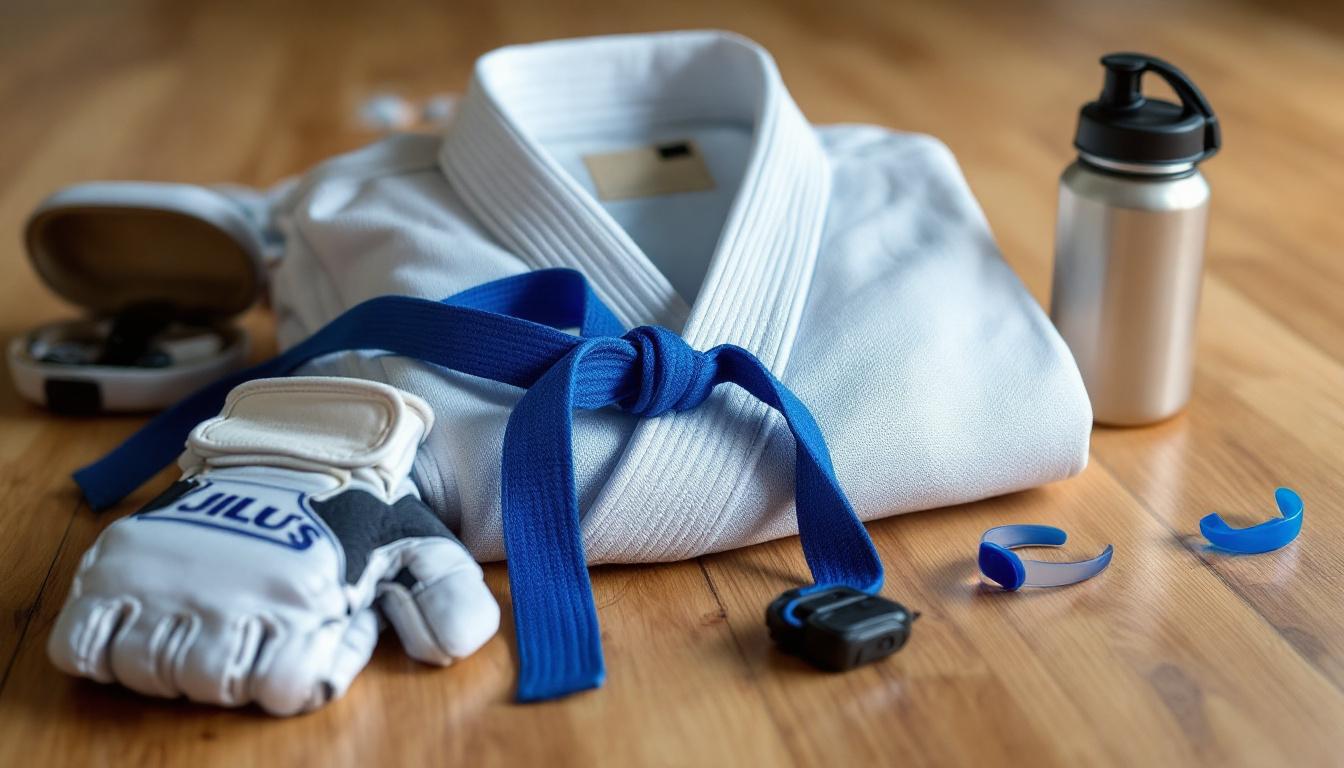At Jiu Jitsu, we know that creating an effective training program is key to mastering this martial art. A well-designed Jiu Jitsu training program can accelerate your progress and help you achieve your goals faster.
In this post, we’ll break down the essential components of a successful training regimen and provide practical tips to optimize your Jiu Jitsu journey. Whether you’re a beginner or an experienced practitioner, these insights will help you structure your training for maximum results.
Mastering Jiu Jitsu Fundamentals
At Souza Grappling Co., we believe that mastering the fundamentals of Jiu Jitsu paves the way for long-term success in this martial art. Our approach centers on three key areas: leverage, timing, and efficiency. These principles form the foundation of effective Jiu Jitsu practice and prove essential for practitioners at all levels.
Leverage: The Power Multiplier
Leverage stands as the cornerstone of Jiu Jitsu technique. It enables smaller practitioners to overcome larger opponents by using mechanical advantage rather than brute strength. To develop leverage, we recommend a focus on body positioning and weight distribution. For example, when you execute a sweep from guard, concentrate on using your hips to create space and off-balance your opponent (rather than relying solely on arm strength).
Timing: The Art of Opportunity
Timing in Jiu Jitsu involves recognizing and seizing the right moment to apply a technique. It extends beyond mere speed, encompassing an understanding of the flow of movement and energy between you and your opponent. To improve timing, we encourage students to practice drills that focus on action-reaction scenarios. Try the “pass-sweep” drill where one partner attempts to pass guard while the other looks for sweep opportunities. This exercise hones your ability to identify and exploit openings in real-time.
Efficiency: Maximizing Results, Minimizing Effort
Efficiency in Jiu Jitsu means achieving maximum effect with minimal energy expenditure. This principle holds particular importance during longer matches or multiple-round competitions. To enhance efficiency, focus on smooth transitions between positions and techniques. A practical exercise is the “flow roll,” where partners practice continuous movement without applying submissions (emphasizing seamless position changes and energy conservation).
Practical Application of Fundamentals
The application of these fundamental principles requires consistent practice and patience. At Souza Grappling Co., our expert instructors guide you through this process, ensuring you develop these vital skills in a supportive environment. We offer a variety of classes that cater to different skill levels, allowing you to progress at your own pace while reinforcing these core concepts.
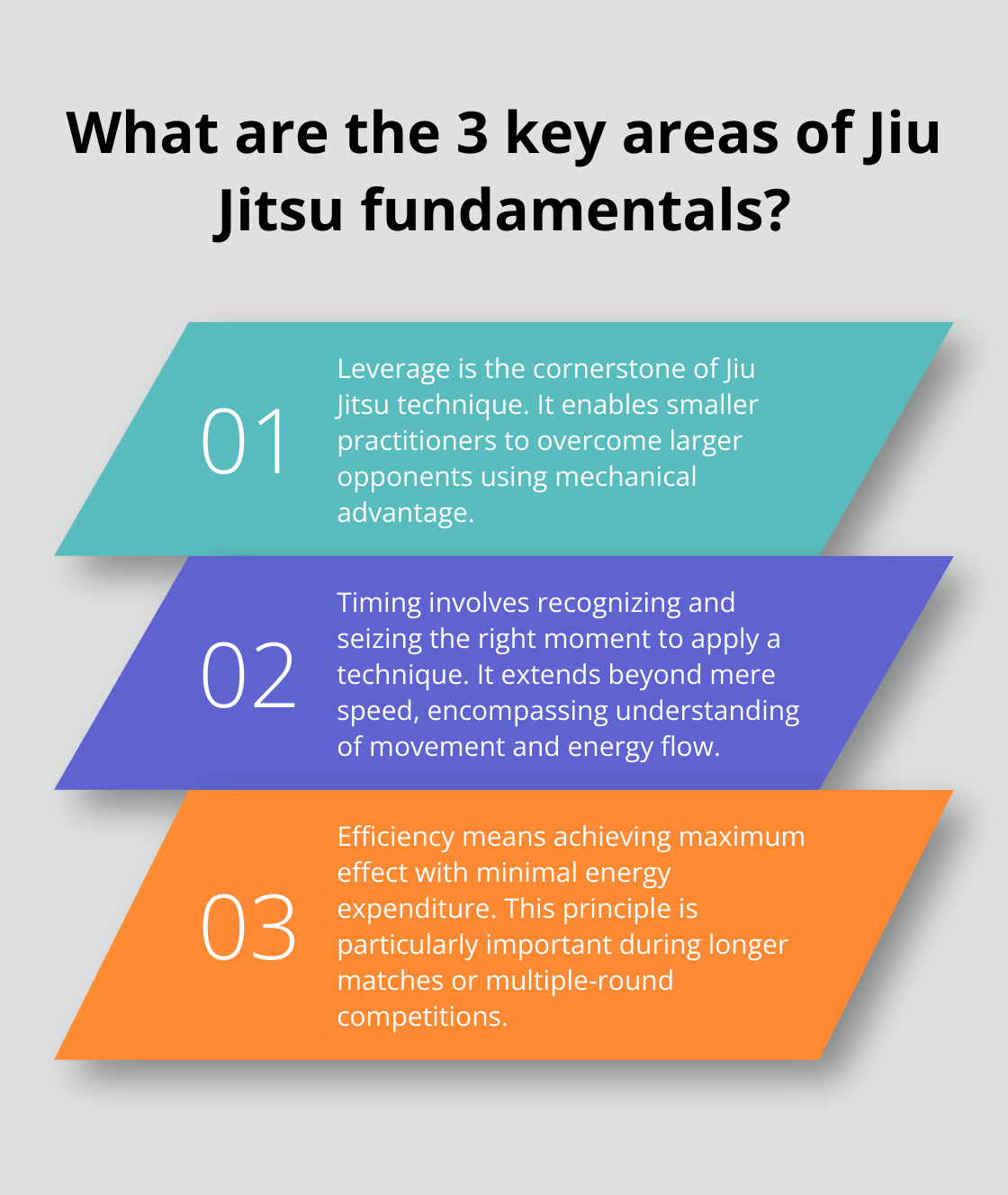
As you continue to refine these fundamentals, you’ll notice significant improvements in your overall Jiu Jitsu performance. The next step in your journey involves structuring an effective training program that builds upon this solid foundation. Let’s explore how to create a balanced and goal-oriented training regimen that will accelerate your progress on the mats.
How to Structure Your Jiu Jitsu Training Program
A well-structured Jiu Jitsu training program can accelerate progress and lead to remarkable results. This chapter outlines how to create a training regimen that will elevate your Jiu Jitsu skills.
Set Specific, Measurable Goals
Define clear objectives for your Jiu Jitsu journey. Instead of vague goals, focus on specific targets. For example:
- Master three new guard passes within two months
- Compete in a local tournament within six months
These concrete goals provide direction and motivation for your training.
Balance Your Training Components
A Comprehensive Jiu Jitsu program should include a mix of technique drilling, live sparring, and physical conditioning. Try to allocate your training time as follows:
- 40% technique work
- 40% sparring
- 20% conditioning
This balance ensures you develop all aspects of your game without neglecting any critical areas.
Create a Weekly Schedule
Consistency propels Jiu Jitsu progress. Design a weekly schedule that fits your lifestyle and commitments. For optimal results, try to include 3-4 training sessions per week. Here’s a sample schedule:
- Monday: Technique class (1 hour) + Sparring (30 minutes)
- Wednesday: Conditioning (45 minutes) + Technique drilling (45 minutes)
- Friday: Technique class (1 hour) + Situational sparring (30 minutes)
- Saturday: Open mat for free rolling (90 minutes)
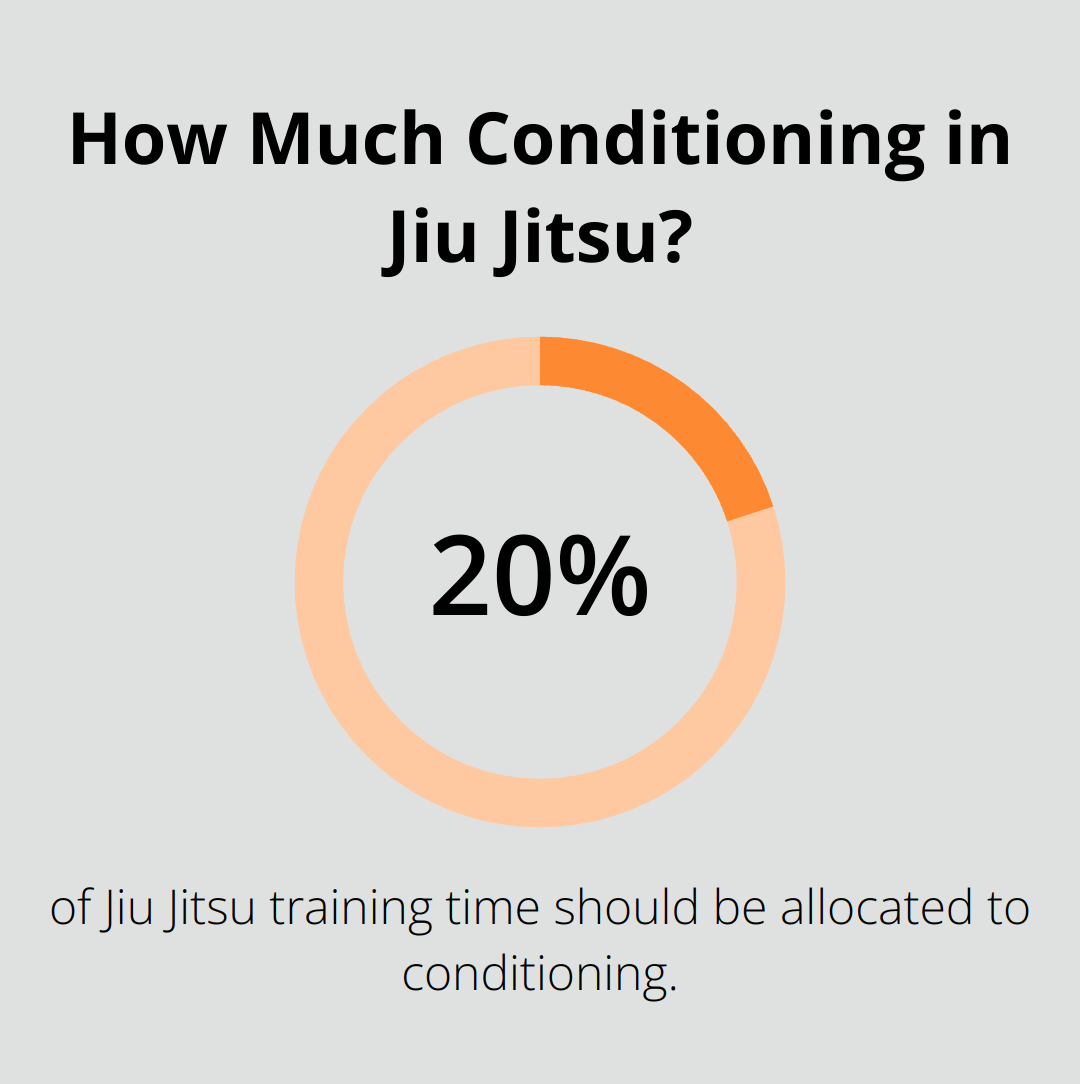
This schedule provides a good mix of structured learning and free practice. Include rest days to allow for recovery and prevent burnout.
Incorporate Variety
To keep your training engaging and effective, incorporate variety into your routine. This can include:
- Attending seminars with guest instructors
- Cross-training in complementary martial arts (e.g., wrestling or judo)
- Participating in open mats at different academies (when permitted)
Variety challenges you to adapt your skills to different situations and training partners, enhancing your overall Jiu Jitsu game.
Track Your Progress
Monitor your advancement to stay motivated and identify areas for improvement. Consider these tracking methods:
- Keep a training journal (record techniques learned, sparring insights, and personal observations)
- Video record your sparring sessions (review them to analyze your performance)
- Set periodic skill assessments (e.g., every three months) to gauge your progress
Tracking your progress helps you stay accountable to your goals and provides valuable insights for refining your training approach.
With a structured program in place, the next step is to focus on the key components that make Jiu Jitsu training truly effective. Let’s explore these essential elements in the following chapter.
Key Components of Effective Jiu Jitsu Training
Deliberate Practice: The Path to Mastery
Deliberate practice forms the foundation of skill acquisition in Jiu Jitsu. This method involves focused, repetitive training of specific techniques and transitions. To implement deliberate practice effectively:
- Select 2-3 techniques to focus on per week
- Execute each technique 50-100 times per session
- Increase speed and resistance as you improve
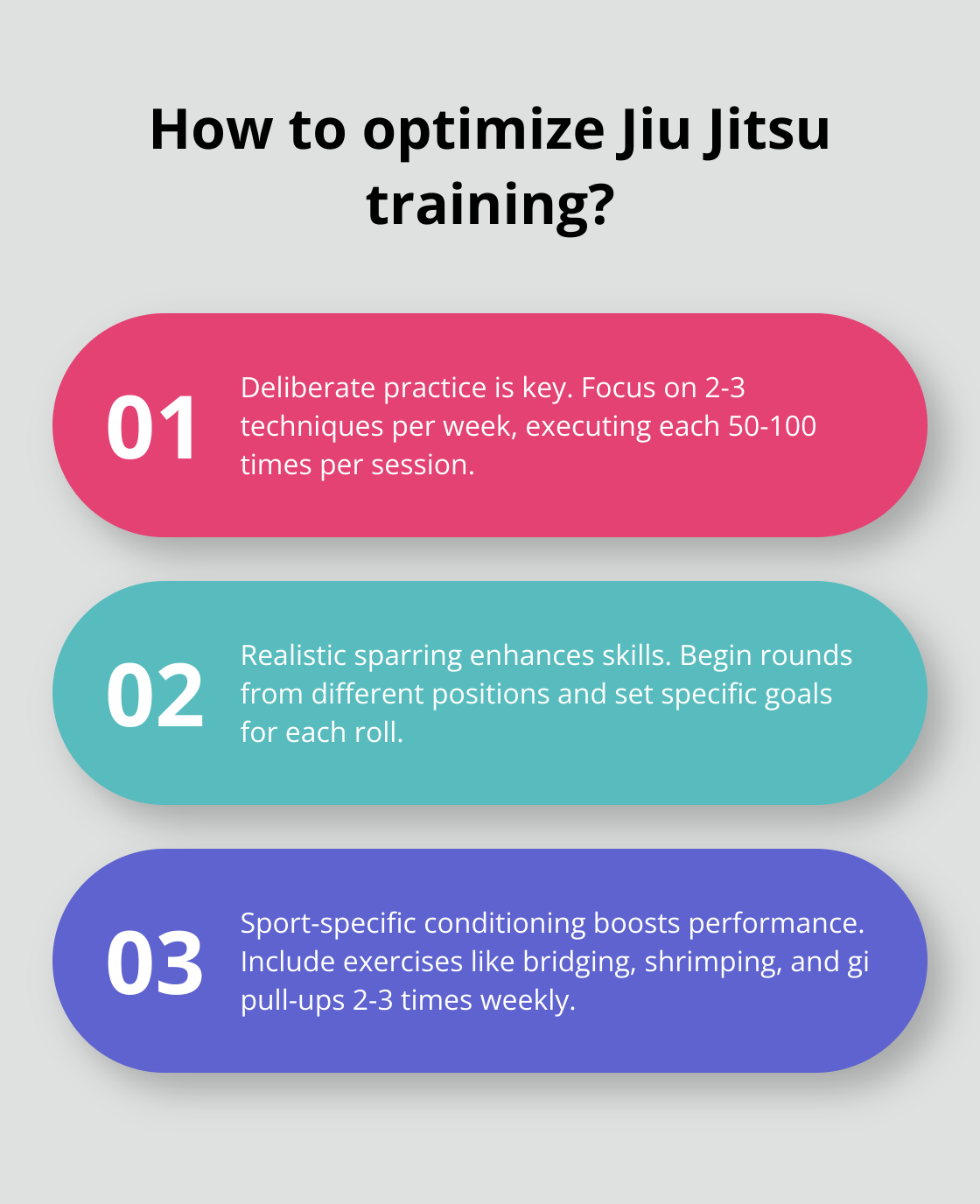
For example, when working on an armbar from guard, start with a compliant partner and execute the movement slowly. As your comfort level increases, ramp up the speed and ask your partner to offer more resistance.
Realistic Sparring: Theory Meets Application
Live rolling and situational sparring play a vital role in developing real-world Jiu Jitsu skills. These exercises help you apply techniques under pressure and enhance your decision-making abilities. To maximize the benefits of sparring:
- Begin each round from different positions (guard, mount, side control)
- Set specific goals for each roll (focus on sweeps or submissions)
- Train with various partners to experience different body types and styles
Situational sparring proves particularly effective. For instance, practice escaping from bottom side control for 5-minute rounds, switching roles with your partner halfway through.
Sport-Specific Conditioning: Building Grappling Endurance
Strength and conditioning exercises tailored to Jiu Jitsu’s demands can significantly boost your performance on the mat. Focus on exercises that mimic grappling movements and energy systems. Some effective exercises include:
- Bridging and shrimping drills (3 sets of 20 reps each)
- Gi pull-ups or towel pull-ups (3 sets of 8-12 reps)
- Turkish get-ups (3 sets of 5 reps per side)
- Kettlebell swings (3 sets of 20 reps)
Add these exercises to your routine 2-3 times per week, either before or after your regular Jiu Jitsu training.
Technique Drilling: Perfecting Your Moves
Technique drilling forms a cornerstone of effective Jiu Jitsu training. This practice involves repetitive execution of specific moves to ingrain them into muscle memory. To optimize your technique drilling:
- Break down complex techniques into smaller components
- Practice each component separately before combining them
- Use visualization techniques to mentally rehearse moves (even when off the mat)
Try to dedicate at least 30 minutes of each training session to focused technique drilling.
Mental Preparation: Sharpening Your Mind
The mental aspect of Jiu Jitsu often separates good practitioners from great ones. Incorporate these mental preparation techniques into your training:
- Meditation: Practice mindfulness to improve focus and reduce anxiety
- Visualization: Mentally rehearse techniques and scenarios
- Goal-setting: Establish clear, achievable objectives for each training session
Allocate 10-15 minutes before or after each training session for mental preparation exercises. This practice will enhance your overall performance and help you stay calm under pressure during sparring or competition.
Final Thoughts
An effective Jiu Jitsu training program requires careful planning and dedication. We explored fundamental principles, structured training regimens, and key components that contribute to success on the mat. Consistency in your Jiu Jitsu journey will yield remarkable results over time, enhancing both physical abilities and mental resilience.
Souza Grappling Co. offers the perfect environment to pursue your Jiu Jitsu goals. Our facility, instructors, and diverse class offerings cater to practitioners of all levels. We provide a comprehensive martial arts experience that fosters growth, community, and personal achievement.
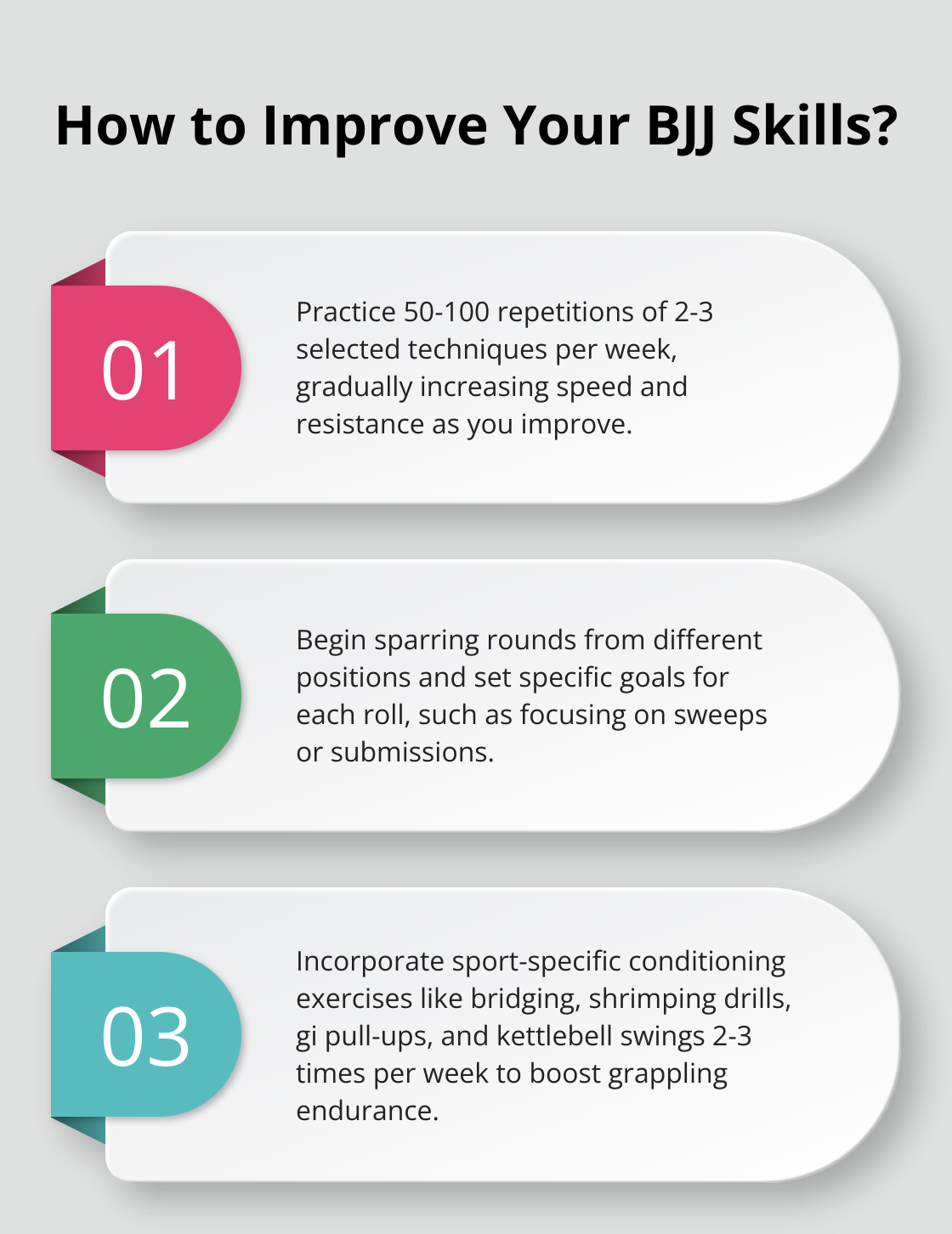
Take the first step towards mastering Jiu Jitsu today. Join us at Souza Grappling Co. and experience the transformative power of a well-designed Jiu Jitsu training program. Your journey to becoming a skilled and confident martial artist starts here.

